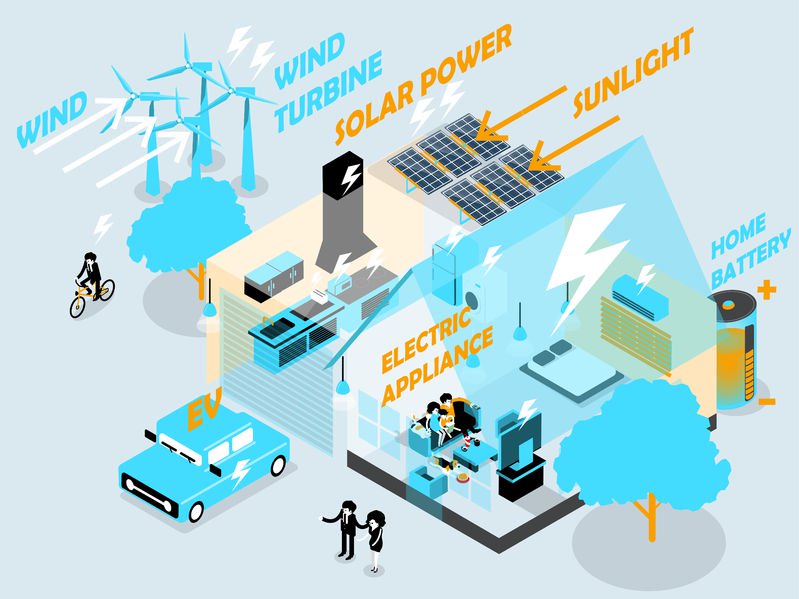Every new home in California is going solar by 2020. If solar-energy companies have their way, those homes also will come with batteries.
Companies like Tesla and SunRun are starting to bid on utility contracts that would allow them to string together dozens or hundreds of systems that act as an enormous reserve to balance the flow of electricity on the grid. Doing so would accelerate the grid’s transformation from 20th century hub-and-spoke architecture to a transmission network moving electricity among thousands or millions of customers who generate and store their own power. “It’s less like broadcast and more like the internet,” says Haresh Kamath at the Electric Power Research Institute (EPRI).

In theory, networked home-solar-and-battery systems, acting in coordination over a single geographical area, could replace things like natural gas “peaker” plants need to help support the grid on a moment’s notice. But it’s an open question whether it makes financial sense.
California, New York, and Puerto Rico are all in the process of soliciting unconventional grid solutions to “defer or avoid conventional infrastructure investments.” An unconventional method has yet to be done at scale, however, and Federal regulators have declined to sign off, citing the need to study the issue further.
Kamath says renewable mandates could keep home solar-storage solutions for the grid going for a while, but the idea will have to prove itself on the market, perhaps by aggregating large areas, if it wants to seriously compete with existing energy assets.
Read more: QZ


